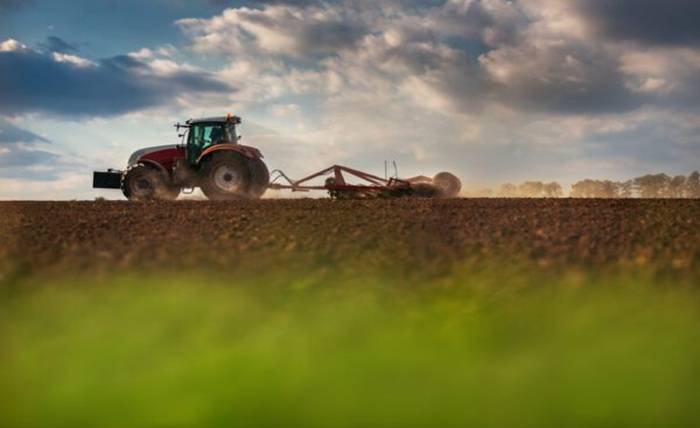The agriculture industry is an intricate network of farms, processing plants, storage facilities, and distribution channels. From planting and harvesting crops to processing food products and maintaining equipment, every stage requires precision, efficiency, and reliability. Modern technology has provided tools to streamline these operations, and one of the most transformative solutions is the Computerized Maintenance Management System (CMMS). But what is CMMS exactly? Simply put, it is software that helps manage, schedule, and track maintenance activities across equipment and facilities. By optimizing maintenance workflows, reducing downtime, and improving resource management, CMMS solutions have become indispensable for agricultural operations of all scales.
Streamlining Farm Equipment Maintenance
Farm equipment, from tractors and combines to irrigation systems and milking machines, forms the backbone of agricultural productivity. Equipment failure can halt operations and lead to costly delays during critical periods such as planting or harvest season. A CMMS helps farmers stay ahead of these challenges by tracking machinery maintenance schedules, alerting teams to upcoming servicing needs, and recording repair histories.
Preventive maintenance is a crucial aspect of CMMS. By scheduling regular inspections and servicing, farms can avoid unexpected breakdowns and extend the lifespan of expensive equipment. For example, a CMMS can automatically notify the maintenance team when a tractor is approaching its service interval, ensuring that oil changes, filter replacements, and calibration checks are completed on time. This proactive approach minimizes downtime and maintains consistent productivity throughout the farming cycle.
Enhancing Storage and Facility Management
Agriculture is not limited to the field. Storage facilities, silos, and cold rooms play a vital role in maintaining product quality and preventing spoilage. A CMMS provides a comprehensive view of facility conditions, enabling maintenance teams to monitor temperature controls, humidity levels, and mechanical systems.
Work order management features within CMMS streamline tasks such as repairing refrigeration units, inspecting storage tanks, or servicing ventilation systems. By centralizing these workflows, teams can quickly respond to issues before they affect crop or product quality. This level of oversight ensures that farms and storage facilities operate efficiently and meet food safety standards, ultimately reducing losses and improving profitability.
Supporting Food Processing Operations
Once agricultural products leave the farm, they often enter processing plants where quality, safety, and efficiency are paramount. Processing equipment, including grinders, conveyors, mixers, and packaging machines, requires meticulous maintenance to avoid costly production interruptions.
CMMS solutions enable food processing facilities to schedule routine maintenance, track repair histories, and manage spare parts inventory. This ensures that machinery remains operational and compliant with food safety regulations. In addition, automated reporting tools can provide insights into equipment performance, highlighting trends that may indicate potential failures. By addressing these issues early, processing plants can maintain continuous production while safeguarding product quality.
Improving Regulatory Compliance and Safety
The agriculture industry operates under strict safety and regulatory standards, whether it’s for pesticide storage, food handling, or worker safety. CMMS plays a critical role in maintaining compliance by documenting inspections, maintenance activities, and corrective actions.
For instance, a CMMS can track when machinery was last inspected or serviced, providing an auditable record for regulators. Safety checks, such as monitoring chemical storage conditions or testing emergency equipment, can be scheduled and assigned within the system. By automating compliance workflows, CMMS reduces human error, ensures accountability, and supports a safer working environment for farm and processing plant personnel.
Optimizing Resource Allocation and Costs
Agricultural operations often face tight margins and fluctuating market conditions. Efficient resource management is key to maximizing profitability. CMMS helps by providing visibility into labor, materials, and equipment utilization. Maintenance teams can prioritize tasks, allocate personnel effectively, and manage spare parts inventory to prevent shortages or overstocking.
By analyzing maintenance trends, CMMS allows decision-makers to identify high-cost areas and implement improvements. For example, frequent breakdowns of a particular piece of machinery may indicate the need for operator training or replacement. Optimizing these resources not only reduces operational costs but also ensures smoother production cycles, enabling farms and processing plants to meet market demand without unnecessary interruptions.
Supporting Sustainability Goals
Sustainability is increasingly important in agriculture, from reducing energy consumption to minimizing waste. CMMS contributes to sustainability initiatives by promoting efficient equipment use and preventing unnecessary repairs or replacements. By monitoring energy-intensive systems such as irrigation pumps or refrigeration units, maintenance teams can identify inefficiencies and implement corrective measures.
In addition, preventive maintenance extends the lifespan of equipment, reducing the need for new machinery and the associated environmental impact. A well-maintained facility is also less prone to leaks, spills, or contamination that could harm the surrounding ecosystem. CMMS, therefore, not only enhances operational efficiency but also supports environmentally responsible practices in the agriculture industry.
Enabling Data-Driven Decisions
One of the most powerful advantages of CMMS is its ability to collect and analyze maintenance data. From equipment performance metrics to work order histories, the system provides actionable insights that inform strategic decisions.
For agricultural businesses, this data-driven approach can guide decisions on equipment investments, maintenance schedules, and staffing needs. Analytics can reveal which assets are most prone to failure, which processes consume the most resources, and where operational improvements are possible. By leveraging this information, farm managers and processing plant operators can make informed choices that enhance productivity, reduce costs, and improve overall efficiency.
Conclusion
The agriculture industry is a complex ecosystem where productivity, safety, and quality depend on well-maintained equipment and facilities. From farms to food processing plants, CMMS solutions streamline maintenance management, enhance compliance, optimize resources, and support sustainability initiatives. By implementing a robust CMMS, agricultural operations can prevent costly breakdowns, maintain high standards, and make data-driven decisions that drive growth.
In today’s competitive market, technology like CMMS is no longer optional—it is essential for farms and processing facilities striving to achieve efficiency, profitability, and long-term success. Whether managing tractors in the field, cold storage units, or food processing lines, CMMS ensures that every element of the agriculture industry runs smoothly from seed to table.

